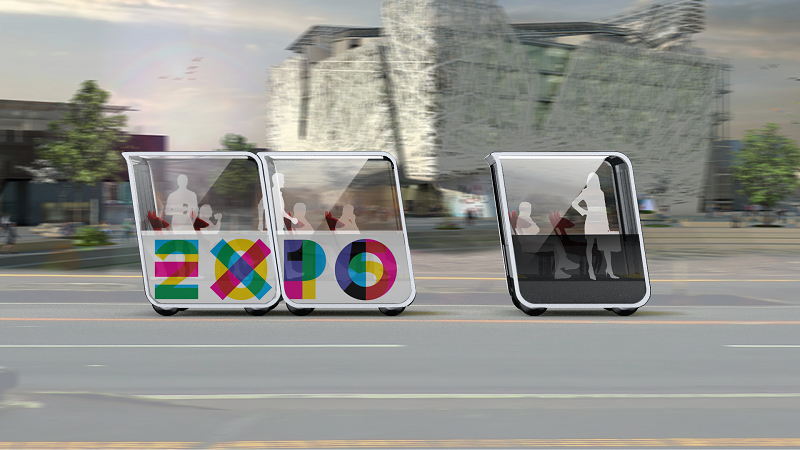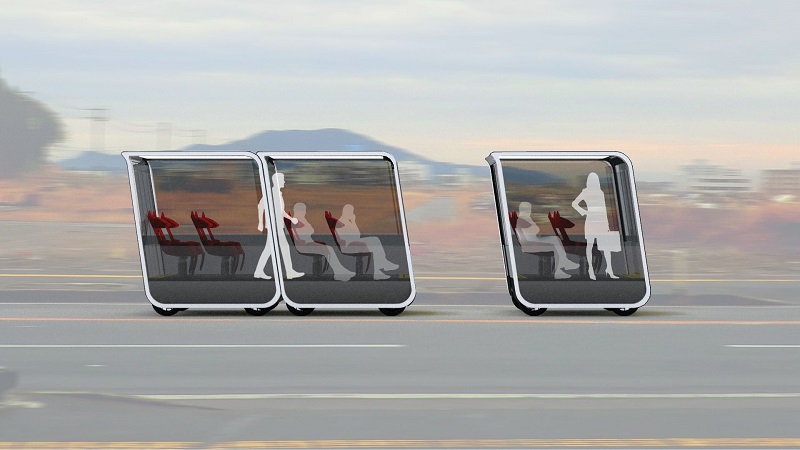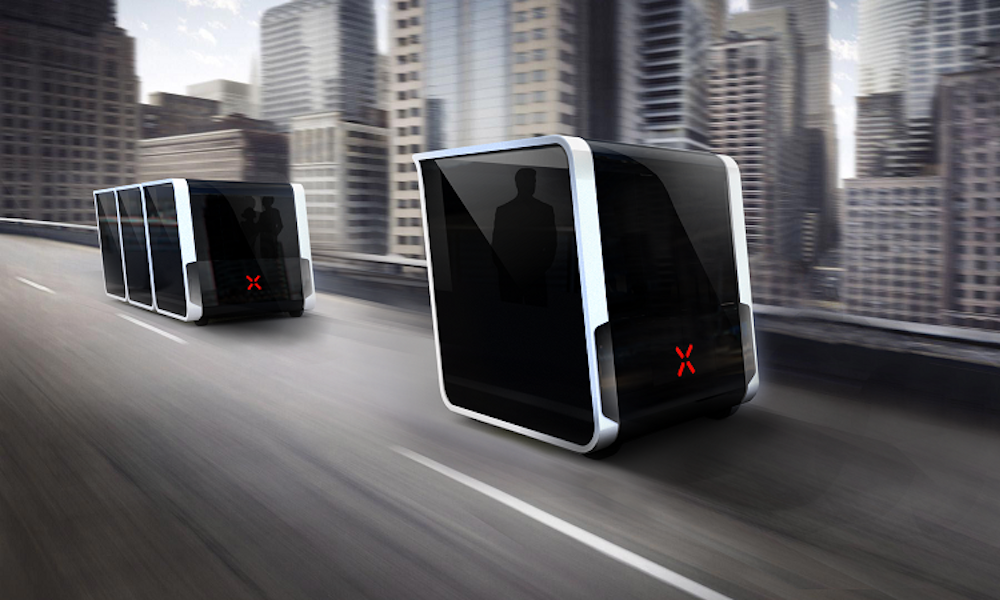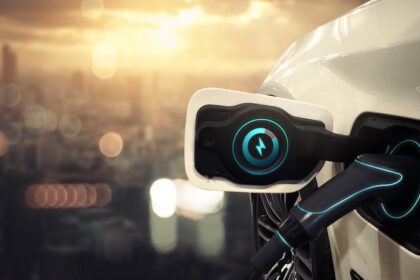As creative as the developers of autonomous cars are in terms of technology, they are mighty bland when it comes to design. Because in the end, they still look exactly the same as conventional cars – unfit to transport more than inmates. It is precisely this boring type of design that the Italian company Next Future Transport would like to get away from. Their idea: autonomous pods instead of cars.
Autonomous cars are indeed the vehicles of the future. The only thing that’s funny is that all the concepts, designs and even the first vehicles with autonomous functions still look like boring, normal cars, even when coming from innovative creators like Tesla and Google. Next Future Transportation has a little more imagination. Together with a team in Silicon Valley, Tommaso Gecchelin, the designer, engineer and inventor behind NEXT, is working on his vision for the transport of the future: autonomous pods.
Smart pods
The NEXT pods are intended to be electrically driven, autonomous, joinable and available on demand. The pods are set to come in black, but could also be “individualized.” In other words, they could become mobile advertising vehicles.

In practice, this could look like this: in the first step, users can order the pods via an app. Depending on demand and the destination, different requests are coordinated in order to be able to take as many other passengers as possible on the same route, similar to Uberpool. The vehicles can also communicate with each other. If several pods are going the same way, they will able to connect with each other during the journey. This should save energy and space and make things easier on other traffic.

If several of these pods are connected to each other, the connecting door opens and you can walk back and forth between individual pods, similar to between compartments on a train.
Wanted: Investors
But this is by no means all that Gecchelin and his team have imagined. During the journey to work, for example, a coffee pod could dock up, offering the commuters fresh coffee. On the way home, a movie pod could dock up so people could relax and enjoy some entertainment on the way home.
And here the fun begins! The pods can, of course, be purchased not only by cities, but also by private individuals or companies. Imagine, for example, a rolling bar that drives you and your friends to the club. Soon, there could be “pod parties.” Sleeper pods would also be practical, in which travelers could sleep in a real bed during overnight trips and thus arrive at the destination more rested.
But this is not something for the distant future. Rather, this could be reality in just a few years. According to NEXT, the first autonomous pods are to be ready by 2020. In order to get the necessary financial resources together, the company has launched a crowdfunding campaign. Whoever invests $100,000 is promised a “futuristic caravan.” Since the launch of the campaign about four months ago, however, the concept seems to have not fully convinced the crowd. So far, NEXT has been able to collect only $78,250.










